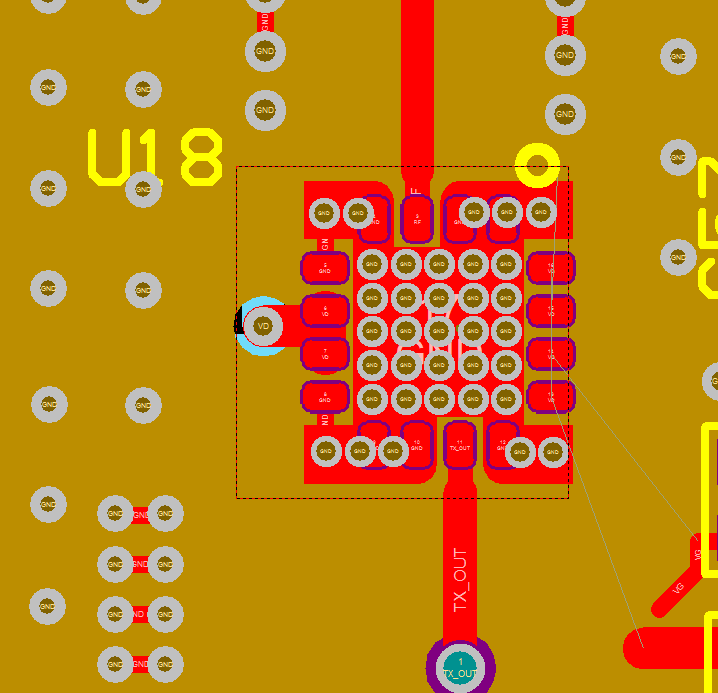I'm concerned about matching. If you look at the pictures, there is a certain tracewidth optimized for 50 ohm that is then changed to fit the pad of the rf component. How would I measure the amount of reflection in an already built system?
Situations: The RF board is already built, there is another component that generates the rf signal on the other side of the board, making the attachment of an sma connector to hook up a network analyzer not so likely. Even if it wasn't there, the trace is far from the board edge (maybe a right angle sma connector and unloading the rf generator?).
Additionally, it would be nice to test this for every board that comes through production (making attaching components not an option). Is there a way to test it with an rf probe (just a cable that you touch the tip of the cable to the trace) or some other method to ensure accurate matching?


